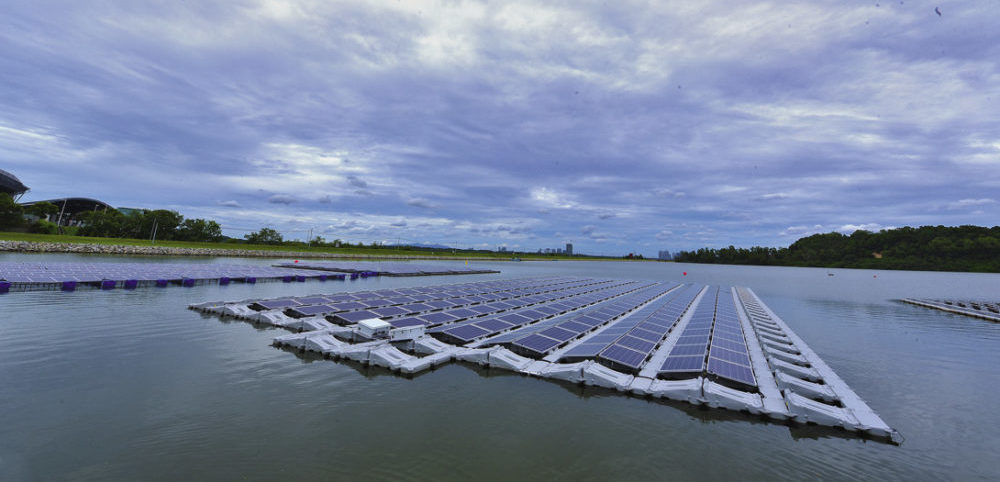Sunseap has announced plans for a 5 MW floating PV system in Singapore. The project is supported by Singapore’s Economic Development Board and will provide power to the grid over a 25-year period when complete.
Recent estimates suggest that 1.1 GW of floating solar has been installed around the world to date. The vast majority of this, however, is located on calm, fresh inland waters such as lakes or drinking water reservoirs.
Building solar at sea is a lot more challenging, given the corrosive nature of salt water and the effect of waves. Sunseap, however, has announced plans to locate a system to the north of the island nation, on the strait of Johor.
“Sunseap is excited to embark on this landmark project which demonstrates Sunseap’s engineering capabilities,” said Founder and CEO Frank Phuan. “Our floating solar system supports Singapore’s ambition to be a solar hub for Asia, and we hope it will ignite more deployment of alternative methods of tapping solar energy.”
Popular content
Floating PV is of particular interest in nations such as Singapore, where land availability is a major barrier to ground mounted projects. The Solar Energy Research Institute Singapore (SERIS) has operated a test bed for floating PV for the past two years, to evaluate the potential of various different system types and mounting solutions for floating PV.
Sunseap added that it has participated in test bed projects led by SERIS. With the latest project, it will build on its experience with floating PV on freshwater reservoirs.
Singapore also conducted a 2.5 MW tender for floating PV back in April, and is currently evaluating the feasibility of a massive 100 MW floating PV project on the Kranji reservoir, which also opens out onto the Strait of Johor.
This content is protected by copyright and may not be reused. If you want to cooperate with us and would like to reuse some of our content, please contact: editors@pv-magazine.com.



1 comment
By submitting this form you agree to pv magazine using your data for the purposes of publishing your comment.
Your personal data will only be disclosed or otherwise transmitted to third parties for the purposes of spam filtering or if this is necessary for technical maintenance of the website. Any other transfer to third parties will not take place unless this is justified on the basis of applicable data protection regulations or if pv magazine is legally obliged to do so.
You may revoke this consent at any time with effect for the future, in which case your personal data will be deleted immediately. Otherwise, your data will be deleted if pv magazine has processed your request or the purpose of data storage is fulfilled.
Further information on data privacy can be found in our Data Protection Policy.